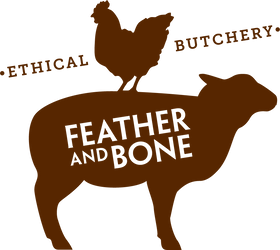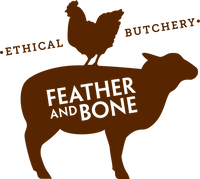Drought report: Grassland Poultry, November 2018
As the extreme weather across the country continues, the air waves are choked with heartbreaking stories of farmers brought to their knees and struggling to cope. From the city, it's hard to get a clear perspective on the scale of hardship, the causes and the possible solutions. So last November, in response to media reports of farms in crisis due to the drought, we decided to seek some perspective from the farmers with whom we work. Before you read their reports, we'd encourage you to read our introduction - 'Grass roots response to drought'.
We’ve checked in with all of the farms over the last month and it’s sobering to note that little has changed since November 2018.
Grassland Poultry
Farmers: Kim and Brian Kiss
Location: Wellington, NSW, 2820
Produce: Sommerlad chickens
We started buying Grassland chickens in August 2017
11 November 2018
When did you start to realise that this drought would probably be prolonged and very serious?
When did you start to take mitigating action against this drought?
What are the main actions you’ve taken and strategies you’ve followed?
The problem with drought or long dry spells is you never know how long or serious it is going to be. Therefore, having strategies and plans in place as a normal practice can guide us so we can act early without getting caught up in the emotion (which can be very hard).
We started reducing our stock numbers in February 2017 - our first sale was all of our sheep flock and we then continued to sell livestock until June 2018, selling all of our weaners, heifers and most of our cows. By June 2018 we had only 80 pregnant cows left. We normally can run up to 1,000 ewes and 450-500 cows, their progeny and our Grassland Poultry (Sommerlad Heritage Chickens) enterprise.
We have a mixture of tools in our tool box to help with our decision making, which are made after considering the polices and strategies that we have in place for managing low rainfall periods. Some of these tools are to measure the amount of dry matter (grass) we have available so we can work out how many days of feed we have available.
These sales were triggered by us matching stocking rate to carrying capacity which really means matching how many mouths you have to how much grass you have. Keeping in mind we want to always retain 100% ground cover, this looks after the soils. This is one of our main principles.
Decisions on how and what we reduced our stock numbers to were made by comparing our options: the cost of feeding in a confined area, finding agistment for a long enough period or selling. We crunched the numbers, while also looking at how this would affect the landscape and people. By using our tools early, we planned, choosing to sell what was left of our breeding herd and keeping only 80 cows in a confined area and feeding them hay. Once the decision to feed these cows hay was made, all the hay needed for this period was purchased so we know how much it was going to cost us.
This is very different from others who don’t plan appropriately and find themselves buying feed in at a higher and higher price. We bought enough for these cows to calve down and we also decided when we started feeding that if the dry spell had not broken by the time the hay had run out we would sell cows and calves as a unit.
We have not made a bad ‘selling’ decision since we have been managing holistically on our farm.
What are your priorities during this period and what are your objectives (e.g. maintain a core breeding stock, maintain ground cover etc.)
- 100% ground cover
- Soil Health
- Ecology Health
- Health of the stock
- Human health
- Being in control, reassessing the pre-determined time we had set for hand feeding, looking for the better outcome.
- We did keep some breeding cows though we would have sold them if we didn’t get rain
- Manage in a way that isn’t stressful for the animals, people in the business, work load and emotionally, while always looking after the landscape.
What are the main challenges you’ve faced during this drought? (e.g. retaining ground cover, dealing with kangaroos etc)
It is very hard to rest our country (soils and pastures) when there is such an imbalance in the natural kangaroo population. This has been impacted by the way modern farming has developed and having more water points creating a landscape where there are not many places without water available. It is only natural for kangaroos to graze where the feed and water is and in these plague numbers they will over-graze the pastures. By managing our landscape holistically with long periods of rest, it becomes more of an issue for us with the kangaroos as we rest and save grass. Do not know what the answer is though we are looking at exclusion fencing.
Through this drought we locked up country to save pastures though it was eaten by the kangaroos leaving the landscape in a vulnerable state.
Have you witnessed or learned anything particular over the last year that has changed or reinforced your thinking?
Having experienced different levels of dry spells/drought at Meramie it was easier this time round to implement our strategies. It has reinforced that managing holistically does take the stress and pressure off the whole business and landscape.
The last drought was the worst we have ever experienced. As hard as it was to sell our stock, prices were good and there was no reason for farmers to have dying animals. Having sold early allowed us to rest our country and, now that it has rained, the pastures have responded and we have been able to buy back in before most other conventional farmers in the area.
One good thing about this time, was that we were able to buy back the heifers that we had to sell that were in calf to our Wagyu bulls. The farmer who bought them had run out of feed, so we’ve been able to get some of our genetics back.
- Look after the land and it will look after you, you hear this from the Aboriginal elders all the time.
- Selling early has always been a good strategy for us and it was proved again this time.
- Don’t procrastinate...act.
How would you describe what you do and the contribution you make to Australian agriculture?
We are part of a movement (Charles Massy) that is moving away from industrial agriculture in Australia. Conventional farming in Australia has been using European industrial agricultural methods in a climate and soil types that is far removed from the source of those methods and the landscapes in which they were developed. We have learned to work/live with the Australian climate/landscape, as nature intended.
What do you think the ‘City' - consumers, retailers, policy makers - should be doing in times of drought?
- Don’t give token handouts / charity
- Pay more for food all the time, stop looking for the discounted food or bargain at large supermarkets, this only supports their shareholder not the farmer.
- Healthy balanced grown food from healthy soils is not a commodity that should be discounted, this is to be valued and paid a premium for all the time.
- How food is grown, is so important to human health and consumers need to make that link.
- Financial support for farmers through the drought in the past has only helped poor/bad managers, as this is normally caused by poor planning and decision-making that gets them into trouble.
- It would be good to encourage and highlight the good stories of drought not the worst. Making farmers stronger in the good times so they can ride out the bad.
- Government policies: taxation and loans to encourage better regenerative agriculture.
Other comments
- Good farmers don’t have dying stock, they make the hard decisions early
- Drought is man made
- Work with nature/climate/weather not against it.
- Match stocking rate to carrying capacity - run the amount of stock that the land and rainfall allows.
- Promote what is good: producing food / fibre, looking after the environment through dry times, (less production is less income) and plan using well thought out strategies.
- Don’t highlight: degrading soils, poor livestock health, dying /dead animals, bad management and no long-term planning.
Postscript 7th March 2019
The above comments were made looking back on the worst dry spell we have ever had…we have had a few rain events this summer and our pastures have bounced back due to maintaining 100% ground cover and providing rest for our pastures. Then we restocked by buying a few cows and calves back in.
We did not fully restock, being very mindful that the drought may not have truly broken and as it turned out, it hadn’t, and so now we are de-stocking again. We sold 100 cows, last week, as we have had no run off water leaving our three very big dams very empty, (two which are over 10 ML).
Planning has once again taken the stress off the landscape by destocking and also the people within the business. We will continue to reduce our stock numbers matching their water requirement to what we have available, while looking after our natural water springs.




Kim and Brian have excellent strategies for the drought. We too have found wildlife needed a sanctuary in the drought and the tree lots were a good place for them.
Leave a comment